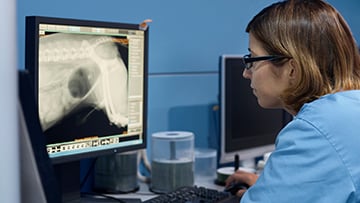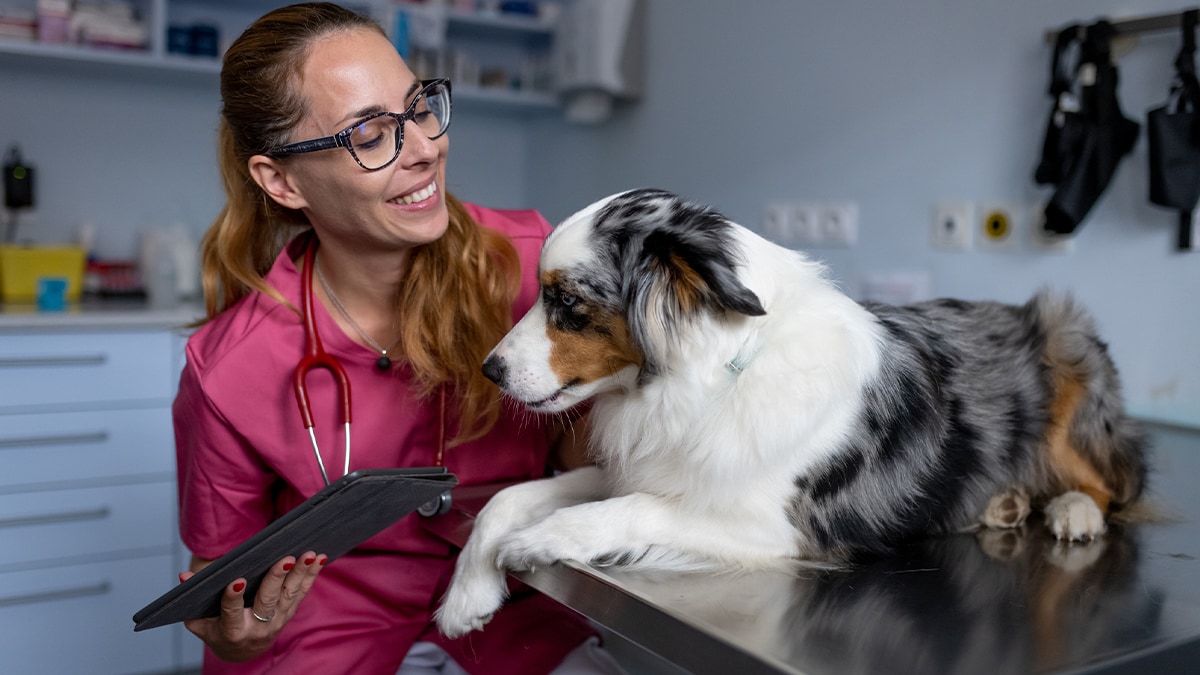Key points
- Veterinary medicine and animal care workers are exposed to a wide variety of environments and species of animals, based on their specialization.
- Workers are exposed to a variety of biological, chemical, physical, and psychological hazards depending on their workplace setting, types of animals, and types of tasks.
- NIOSH's Healthcare and Social Assistance Sector Program is working to identify and address priority hazards of these workers.

Overview

Veterinary medicine and animal care workers provide medical, surgical, laboratory, preventive health, and animal care services for a variety of animal species. Services include routine care and disaster and emergency response. The industry covers a wide range of professionals, including veterinarians, veterinary technologists, technicians, assistants, and administrative staff, as well as laboratory veterinarians and animal caretakers. It also includes zoo and aquarium employees, such as animal caretakers and groundskeepers, workers in animal shelters and animal control, stable and kennel attendants, groomers, animal trainers, meat and poultry processing staff, and employees in pet and pet supply stores.
In the United States, there are more than 596,000 veterinary medicine and animal care workers.[1, 2, 3, 4]
Many veterinary medical workers are female, including 69% of veterinarians, 90% of veterinary technicians, and 80% of veterinary assistants and laboratory animal workers.1 Veterinary services rank fourth in incidence rates for nonfatal occupational injuries and illnesses among all industries.2
Veterinary Medicine and Animal Care Workers and the NIOSH Healthcare and Social Assistance Industry Sector
- Bureau of Labor Statistics (BLS) [2023]. Table SNR01. Highest incidence rates of total nonfatal occupational injury and illness cases, 2022. Available at: https://www.bls.gov/iif/nonfatal-injuries-and-illnesses-tables.htm. Date accessed: July 31, 2024.
- BLS [2023]. Labor Force Statistics from the Current Population Survey. Household Data Annual Averages. Table 11. Employed persons by detailed occupation, sex, race and Hispanic or Latino ethnicity. Available at: https://www.bls.gov/cps/cpsaat11.htm. Date accessed: July 31, 2024.
- Bureau of Labor Statistics (BLS) 2022a. Occupational outlook handbook, Veterinarians. Available at: https://www.bls.gov/ooh/healthcare/veterinarians.htm. Date accessed: July 31, 2024.
- BLS 2022b. Occupational outlook handbook, Veterinary technologists and technicians. Available at: https://www.bls.gov/ooh/healthcare/veterinary-technologists-and-technicians.htm. Date accessed: July 31, 2024.
- BLS 2022c. Occupational outlook handbook, Veterinary assistants and laboratory animal caretakers. Available at: https://www.bls.gov/ooh/healthcare/veterinary-assistants-and-laboratory-animal-caretakers.htm. Date accessed: July 31, 2024.
- BLS 2023d. Occupational employment and wages, May 2023, 39-2021 nonfarm animal caretakers. Available at: https://www.bls.gov/oes/current/oes392021.htm. Date accessed: July 31, 2024.
